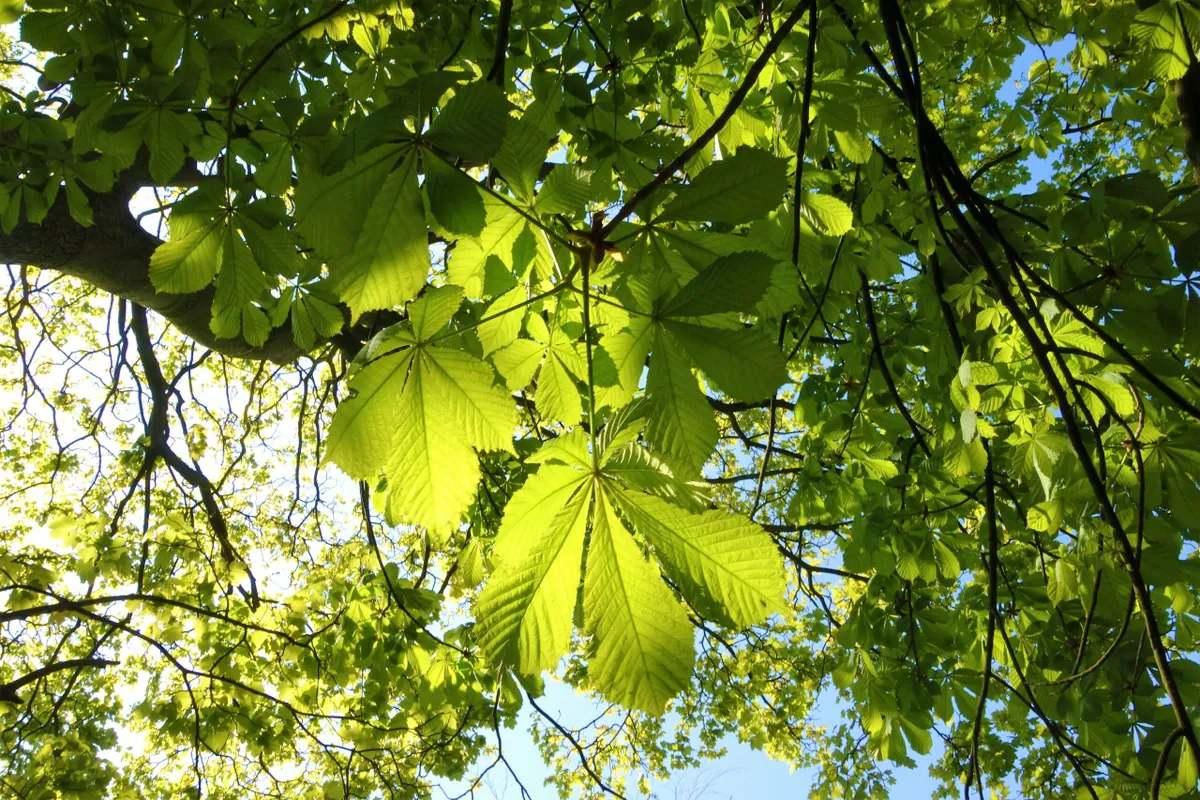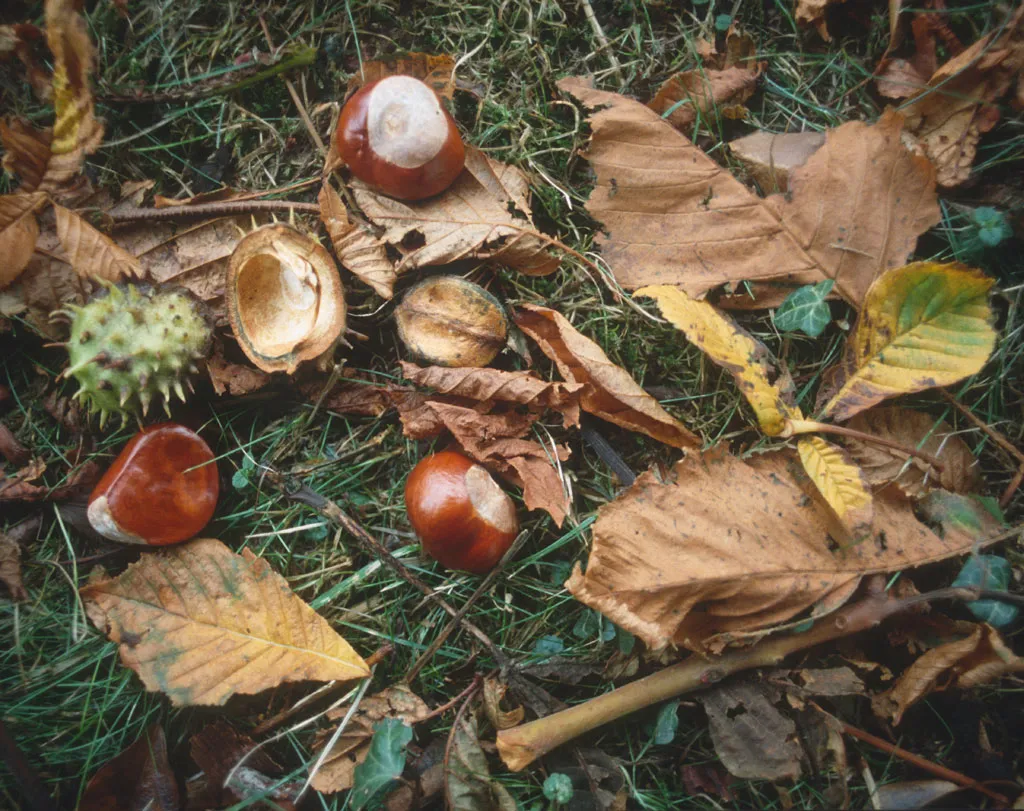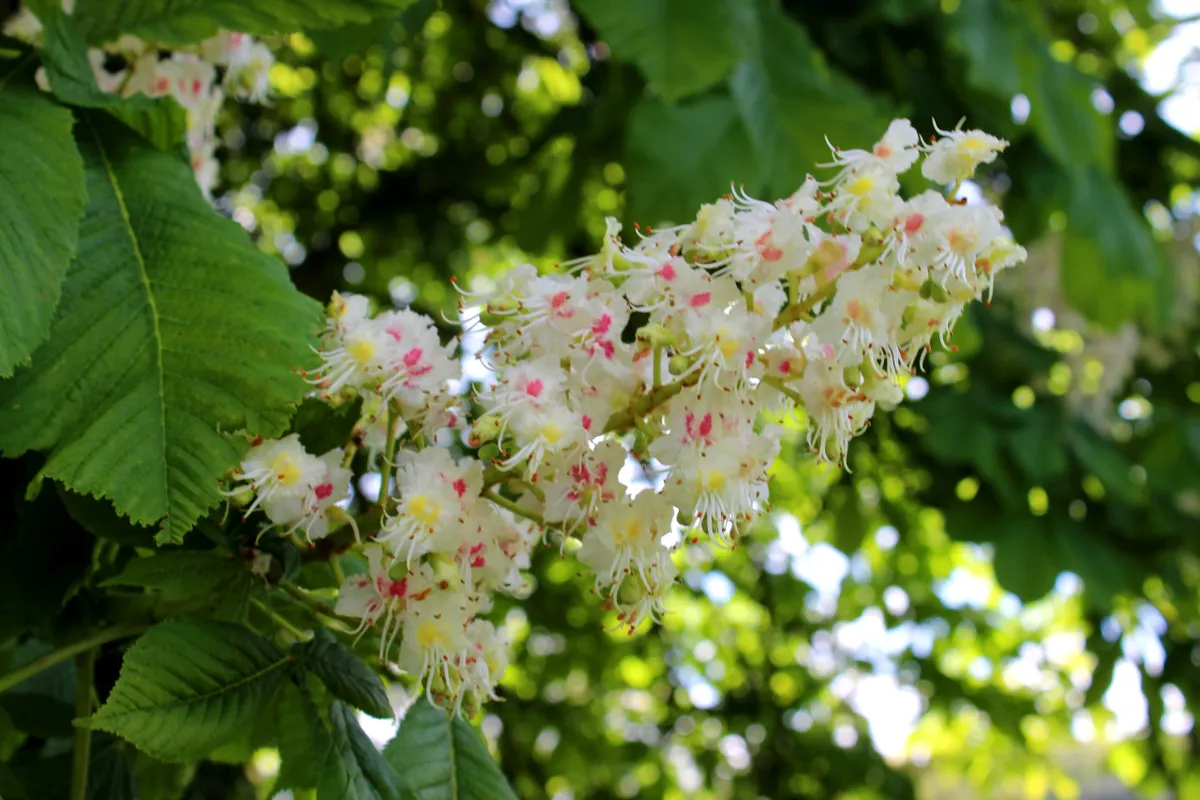The horse chestnut tree (Aesculus hippocastanum) is not native to Britain, having been imported from Turkey in the 16th century, but still it is entwined within our culture – not least in autumn, when children search so eagerly for its fallen treasures - conkers.
Learn more about the horse chestnut tree, including what its leaves look like, when it flowers and where the tree gets it name.

What is a horse chestnut?
Leaves
The leaves of the horse chestnut appear early in spring, unfurling like the hand of a giant whose great fingers straighten in response to the warming sun. The palmate leaves are made up of 5, 6 or 7 toothed leaves that radiate from the main stem.

Conkers
There is an irresistible excitement when breaking open the spiked husk of a horse chestnut to get the first glimpse of that shiny russet conker within, soon to be skewered and dangled on a piece of string.
The 17th-century diarist and forester John Evelyn suggested that the fruit of the chestnut could cure horses of broken wind, and the tree was named accordingly. Yet horses will not eat conkers and perhaps its alternative name, the candle tree, carries greater resonance.

Flowers
In May, the branches bow beneath candle-like pyramids of white, the flowers sparkling against the green of the leaves like lights on a Christmas tree. For many years the Sunday before Ascension Day was known as Chestnut Day, in recognition of this.

Horse chestnut caterpillars
Deep in the foliage, the caterpillars of moths will be busy. Among them might be the horse chestnut leaf miner, a newcomer to our shores, whose burrowing appetite strips the leaves of colour and brings the brown of autumn while the sun is still high.

